Did you know that optimizing your motorcycle’s suspension can reduce accident risks by up to 37% ? If you demand the smoothest rides, better handling, and lasting bike performance, you can’t overlook local motorcycle suspension repair. This guide reveals how nearby pros can drastically improve your motorcycle’s safety and deliver tailored service, from routine maintenance to high-performance upgrades. Read on to discover how expert suspension care transforms your riding experience, extends component life, and protects your investment—right in your community.
Why Local Motorcycle Suspension Repair is Essential for Every Rider
"Did you know? A well-tuned motorcycle suspension can reduce the risk of accidents by up to 37%! Your safety and ride quality start with precision local motorcycle suspension repair."

When it comes to motorcycle safety and performance, few components are as pivotal as your local motorcycle suspension repair . Suspension systems—including fork tubes, shock absorbers, and innovative click suspension—are your bike’s first defense against road hazards, bumps, and sudden maneuvers. An expertly tuned suspension absorbs imperfections, delivers superior control, and maximizes comfort no matter your riding style.
Local repair shops offer tailored service that big-box online providers and DIY fixes simply cannot match. From diagnosing internal parts like fork tubes to ensuring that shocks are rebuilt with the highest quality parts, technicians use advanced diagnostic tools and race tech expertise to recommend solutions perfect for street, sport, or even mountain bike crossover enthusiasts. Scheduling regular suspension service with your nearby shop means issues like uneven tire wear, uncomfortable handling, or internal component damage won’t go unchecked—keeping your motorcycle suspension serviced for optimal performance and safety.
Understanding Local Motorcycle Suspension Repair: Components and Importance
-
What does local motorcycle suspension repair cover? – Every service includes detailed inspection and maintenance of fork tubes, shock absorbers, click suspension systems, and all internal suspension components.
-
Impact on performance, control, and safety – Professionally serviced suspension boosts ride quality, provides optimal control during aggressive maneuvers, and ensures every ride is safe—whether you’re commuting, racing, or exploring off-road trails.
-
When to schedule suspension service for your motorcycle – Plan for service every 12,000-15,000 miles or sooner if you notice symptoms like bouncing, poor cornering, or visible fluid leaks from fork and shock components.
What You'll Learn About Local Motorcycle Suspension Repair
-
Key signs you need a local motorcycle suspension service – Difficulty steering, noticeable vibration, uneven tire wear, and a harsh ride signal that your mountain bike or motorcycle may need professional attention.
-
Types of repair and upgrade options – From fork tube seal replacement to click suspension tuning and full race tech upgrades, local experts offer every suspension service your bike could need.
-
How local suspension experts customize solutions – Shops analyze your riding style—be it casual, sporty, or Santa Cruz trail riding—for a fully personalized suspension setup, ensuring it suits your favorite routes and performance goals.
Core Suspension Services: What’s Included in Local Motorcycle Suspension Repair?
-
Inspection & Diagnosis: Detecting worn or damaged suspension components requires a keen eye and state-of-the-art tools. Every suspension service starts with an in-depth inspection, identifying fork tube leaks, shock absorber degradation, and clicking inconsistencies to protect your ride quality.
-
Fork Tube Repair & Replacement: Fork tubes serve as the backbone of your front suspension. If bent, leaking, or suffering from degraded seals, professionals restore or replace them with highest quality parts, ensuring safety and reliable absorption.
-
Shock Rebuilding and Tuning: Modern shocks include intricate internal components that require periodic service. Local suspension experts rebuild, re-valve, and optimize shock absorbers, whether for daily riders or race tech aficionados seeking peak performance.
-
Click Suspension Adjustments: Race tech and Santa Cruz click suspension adjustments offer fine-tuned control catered to your bike and riding style. Shops fine-tune rebound, compression, and preload for a truly customized suspension set.
-
Customization by Riding Style: Every rider is different. Whether you’re a commuter, sport enthusiast, or adventure rider, local motorcycle suspension repair customizes your setup using insights into your specific riding style and terrain.
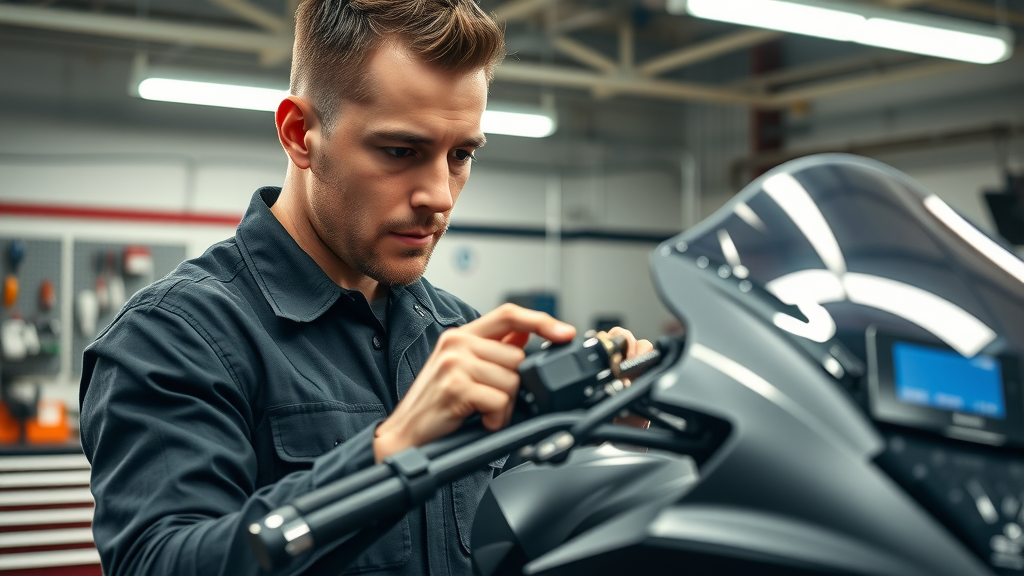
How Race Tech and Click Suspension Enhance Motorcycle Suspension Performance
|
|
|
Costs and Benefits of Motorcycle Suspension Services |
|
Suspension Service |
Average Cost |
Expected Improvement |
|---|---|---|
|
Fork Tube Repair |
$120-$250 |
Smoother handling |
|
Shock Revalve |
$150-$300 |
Increased support |
|
Click Suspension Tune |
$80-$150 |
Precise control |
|
Full Bike Suspension Service |
$250-$600 |
Total ride performance |
Race tech expertise and click suspension tuning bring advanced engineering to your motorcycle suspension. Local shops deploy these technologies to give you custom valving and adjustment options, maximizing both comfort and control for your chosen riding styles. Investing in full suspension service or specialized upgrades ensures you get the highest quality and longevity out of your fork and shock components, whether you’re tackling Santa Cruz trails or city streets.
These enhancements not only provide smoother handling and improved stability, but they also offer tangible safety benefits. High-level suspension services like those incorporating race tech and click suspension are developed for riders who expect the best, making your motorcycle exponentially more responsive over rough terrain and in fast corners. Choose shops with a proven track record in suspension tuning for optimal results.
Choosing a Trusted Local Motorcycle Suspension Repair Shop
-
Certifications: Look for Race tech and manufacturer-trained technicians—these credentials guarantee up-to-date skills in the latest suspension services.
-
Customer Reviews: Prioritize shops with a strong reputation and positive feedback regarding bike suspension service, ride quality, and results.
-
Equipment: Opt for repair centers with the latest diagnostic tools, ensuring efficient, accurate suspension setup and maintenance for brands from mountain bike to Santa Cruz.
-
Turnaround Time: A reliable local shop offers transparent estimates and fast, consistent service—so you’re never left stranded.
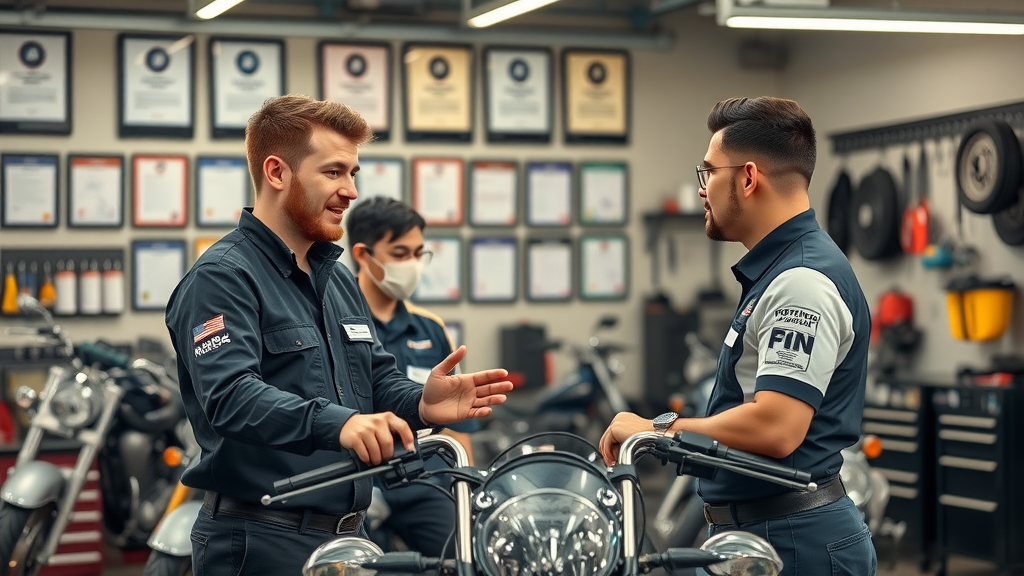
The Benefits of Professional Local Motorcycle Suspension Service
-
Enhances ride comfort and safety: Regular suspension services absorb shocks, enable safer stops, and reduce rider fatigue for all riding styles.
-
Increases longevity of suspension components: Using highest quality parts and expert adjustment, local pros extend the life of shocks, fork tubes, and seals—saving you money over time.
-
Adapts the motorcycle to your unique riding style: Customization options such as click suspension and race tech upgrades mean your bike is set up for your preferred terrain, from street to Santa Cruz-inspired trails.
-
Maximizes bike performance: When your suspension is tuned for the way you ride, every mile on the road or trail feels smoother, safer, and more responsive.
"Suspension isn’t just about comfort—it’s a critical safety system that transforms how your motorcycle handles every corner and bump."
Pricing and Value: Local Motorcycle Suspension Repair Costs
How much does a suspension service cost?
-
Local motorcycle suspension repair prices typically range from $120 for basic fork tube service to over $600 for comprehensive suspension upgrades and customizations. Always confirm pricing and services with your chosen shop.
While some may be tempted by low-cost online offers or DIY solutions, working with certified local technicians ensures you receive the highest quality service. Local experts provide transparent quotes for everything from fork service and seal replacement to complex click suspension adjustments and full rebuilds, making it easier to plan your budget and select the best option for your riding style.
Always check for additional charges related to specialized race tech work or premium internal parts. Reputable shops stand behind their work with warranty coverage, delivering peace of mind every time you schedule your service.
Common Local Motorcycle Suspension Repair Problems and Solutions
How to fix stiff suspension on a motorcycle?
-
Adjust click suspension settings: Tuning rebound, compression, and preload can make your ride noticeably smoother for every terrain and riding style.
-
Replace or service worn fork tubes: Faulty fork tubes degrade handling and increase harshness; repair or replacement is often necessary.
-
Ensure proper lubrication and check for damaged components: Lubrication prevents wear, while inspecting for bent or cracked internal parts keeps your bike suspension serviced and safe to ride.
Tackling suspension stiffness can be a process of elimination. Certified local shops leverage advanced tools to test click suspension settings and diagnose issues with shocks or fork tube integrity. Professional repair ensures your suspension setup matches your riding style and surrounding areas, reducing fatigue and improving control.
Neglecting these issues can lead to further internal component damage or safety risks. Routine maintenance and seasonal suspension tuning are critical for optimal performance and peace of mind on any journey.
How do I know if my motorcycle suspension is bad?
-
Signs include excessive bouncing, uneven tire wear, reduced comfort, and poor cornering. Get an inspection from a local motorcycle suspension repair expert if in doubt.
Additional red flags include persistent fork tube leaks, increased difficulty in controlling your bike suspension, or noises coming from rear shock absorbers. Early intervention by a local repair expert can prevent more costly damage and reserve your right to the smooth, responsive ride your motorcycle is built to deliver.
A professional evaluation includes a comprehensive check of all bike suspension service components, from click suspension tuning to internal part wear, ensuring every element operates as designed.
How much does it cost to lower the suspension on a motorcycle?
-
Lowering a motorcycle suspension typically costs between $200 and $400, depending on model, method, and required parts.
The process often includes installing new fork tubes, adjusting spring tension, or swapping internal components, with costs varying based on bike make and the complexity of modifications. Local shops furnish detailed estimates and provide custom solutions so your mountain bike or motorcycle delivers proper stance and comfort.
Custom lowering improves accessibility but must always be performed by experienced professionals. Expert service guarantees ride quality and safety are never compromised throughout the process.
Comparing Motorcycle Suspension Service Options: Local vs. Online and DIY
|
|
|
Motorcycle Suspension Service Comparison |
|
Service Type |
Pros |
Cons |
|---|---|---|
|
Local Professional Shop |
Expert results, warranty, safety |
Higher up-front cost |
|
Online Mail-In Service |
Convenience, broad options |
Delayed turnaround, shipping risk |
|
DIY Repair |
Lowest initial cost |
High risk, less effective |
While DIY and online options may appear cost-effective, only a qualified local motorcycle suspension repair shop delivers direct accountability, personalized adjustments, and safety-tested solutions. Shops specializing in bike suspension service are familiar with specific challenges posed by regional roads and climate—factors big online outlets often overlook.
Furthermore, local suspension services offer rapid response for urgent issues, in-person consultations, and often a satisfaction warranty—making them a clear choice for serious riders and commuters alike.
Top Tips for Maintaining Your Motorcycle Suspension After Local Repair
-
Inspect suspension components before every ride
-
Clean and lubricate fork tubes and shocks
-
Schedule seasonal click suspension adjustments
-
Follow your technician’s riding style recommendations
-
Keep a maintenance log for performance tracking
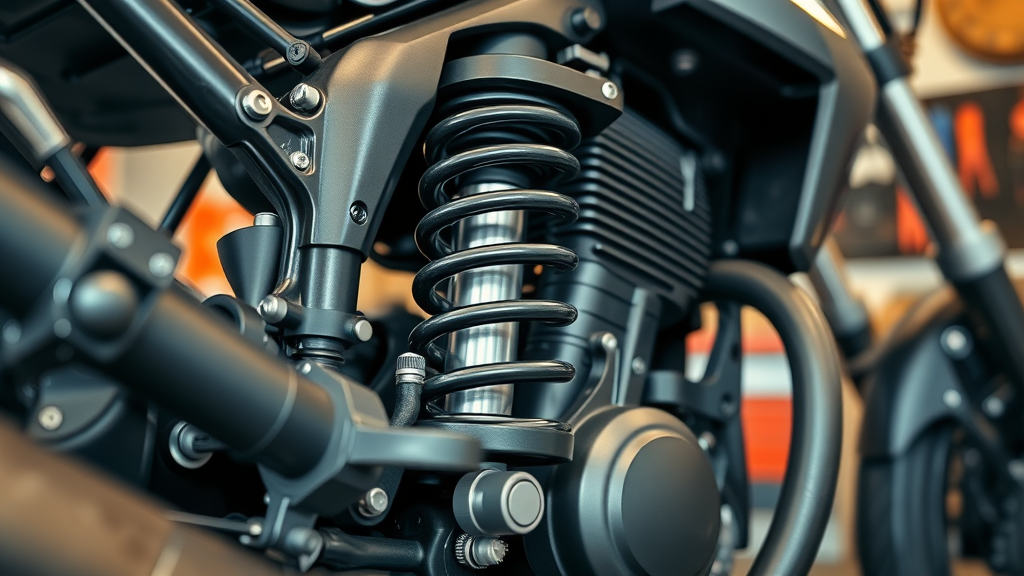
Following these expert tips ensures your fork tubes, shocks, and click suspension settings stay dialed in for the long term. Consistent upkeep translates to fewer unexpected breakdowns, extended suspension component life, and sustained ride quality matched to your riding style or environment.
Proactive maintenance includes checking for seal leaks, corrosion, and abnormal noises. Trusting your local pros with regular fork service and suspension tuning also means you’ll catch any issues early, avoiding costly repairs or replacement down the road.
Frequently Asked Questions About Local Motorcycle Suspension Repair
-
How often should I have a suspension service?
Most riders benefit from a professional bike suspension service every 12,000-15,000 miles. However, aggressive or off-road riding styles, or participation in events like mountain bike races, may require more frequent service. -
Is race tech tuning worth the cost for casual riders?
Race tech tuning provides precision control and custom valving for demanding riders, but even casual riders can experience increased comfort, improved ride quality, and superior suspension setup when investing in these upgrades. -
Can local shops handle custom Santa Cruz or click suspension systems?
Absolutely. Top-rated local motorcycle suspension repair centers regularly work with Santa Cruz and click suspension systems, offering both maintenance and full custom tuning tailored for every riding style and bike brand. -
What is the warranty on a typical bike suspension service?
Reputable shops often offer warranties from 30 days to one year, covering workmanship and select internal parts. Be sure to ask about warranty coverage when you schedule your service.
Upgrade Your Ride with Local Motorcycle Suspension Repair – Book Your Service Today!
-
Consult with our experienced technicians at Nasty Performance Motorcycle Shop for all motorcycle, bike, and click suspension needs.
-
Get personalized advice for your riding style, from routine suspension services to race tech upgrades.
-
Call Nasty Performance Motorcycle Shop Today: 847-458-4858
Key Takeaways from Choosing a Local Motorcycle Suspension Repair Expert
-
Local motorcycle suspension repair keeps you safer and makes every ride smoother.
-
Expert service pays off in performance, longevity, and customization.
-
Trust a reputable local shop with certified technicians and modern suspension services.

See Local Motorcycle Suspension Repair in Action
Watch How Local Motorcycle Suspension Repair Transforms Ride Quality

Regular maintenance of your motorcycle’s suspension system is crucial for ensuring optimal performance, safety, and comfort. A well-maintained suspension absorbs road irregularities, providing a smoother ride and better handling. Neglecting this essential component can lead to decreased traction, uneven tire wear, and increased risk of accidents.
For a comprehensive understanding of the importance of suspension servicing, consider reading The Importance Of Servicing Motorcycle Suspension . This article delves into how regular maintenance can prevent issues like oil contamination and damaged seals, which are common culprits behind suspension failures.
Additionally, Keeping your motorcycle suspension in good shape offers practical tips on regular inspection, proper maintenance, and the benefits of professional servicing to ensure your suspension remains in top condition.
If you’re serious about enhancing your motorcycle’s performance and safety, these resources will provide valuable insights into the significance of suspension maintenance and how to effectively care for this vital system.
 Add Row
Add Row  Add
Add 

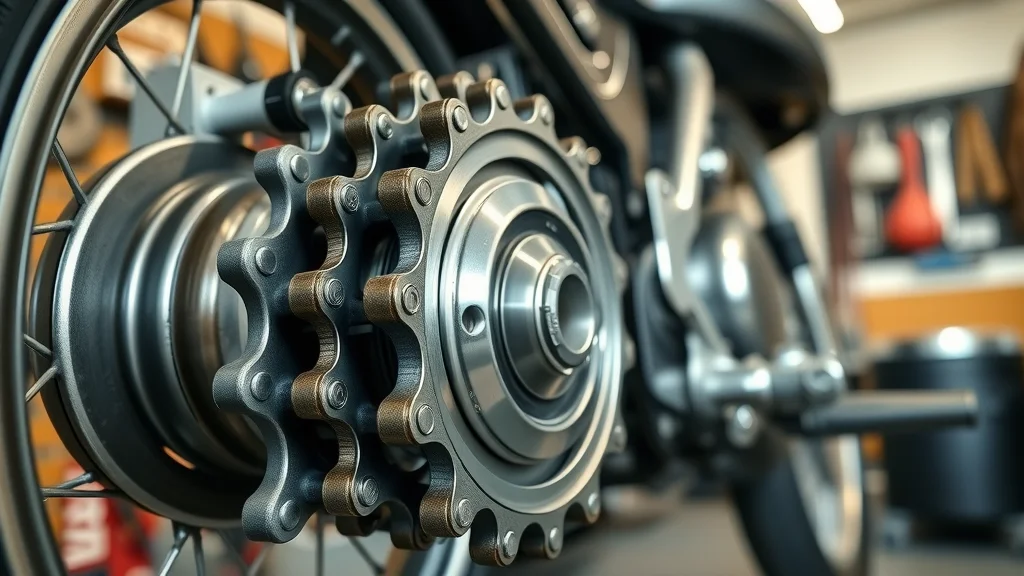
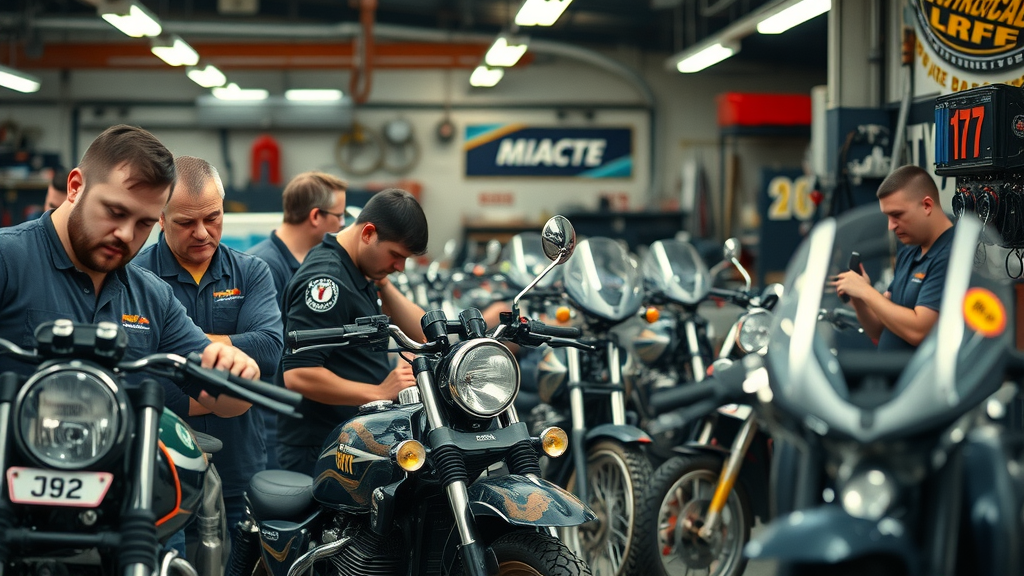
Write A Comment